DAN PARSONS
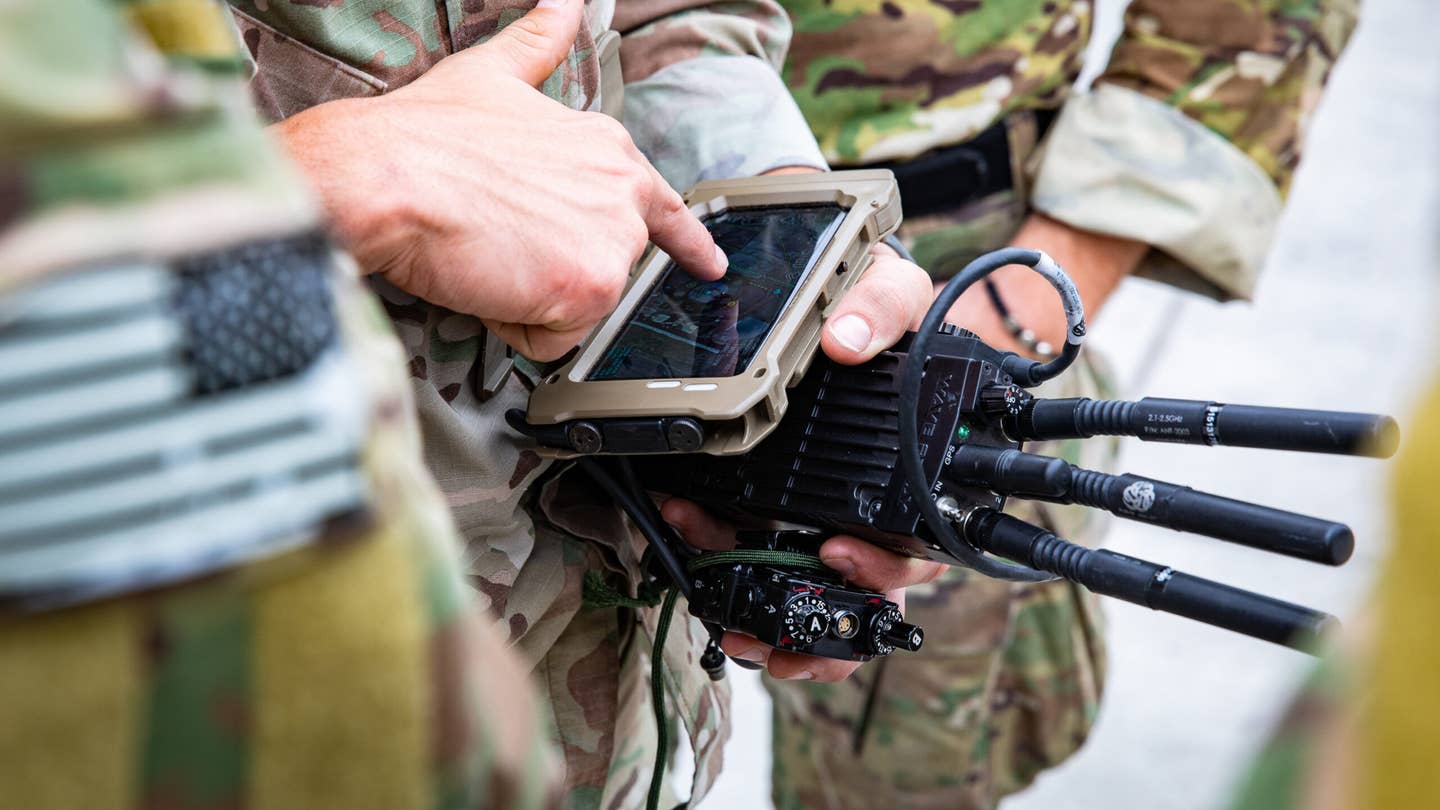
As the U.S. Army fields more advanced technologies in greater numbers, its commanders are on the receiving end of an increasingly powerful firehose of data. It's not necessarily a bad problem to have, senior leaders say, but managing all of that information is critical to operating in a more distributed environment where the service foresees future conflict, like in the vast Pacific region where the "battlefield" could stretch thousands of miles.
With modern unmanned systems, particularly networked flocks of uncrewed aircraft, remote sensors, and satellites, relatively few personnel can draw enormous reams of data about enemy positions and capabilities. Data from various sources can then feed it into a coalition network where the most appropriate available force can act upon it, but commanders must be able to make sense of it all.
That scenario and others played out recently across 10 days of experimentation at Fort Irwin, California, and locations in the Pacific as part of the Army’s larger Project Convergence 2022 event, or PC22. Australian and British forces also participated in the tests, which were designed to evaluate dozens of new and improved weapon systems and other technologies, including ground-launched missiles, drones, and unmanned ground vehicles.
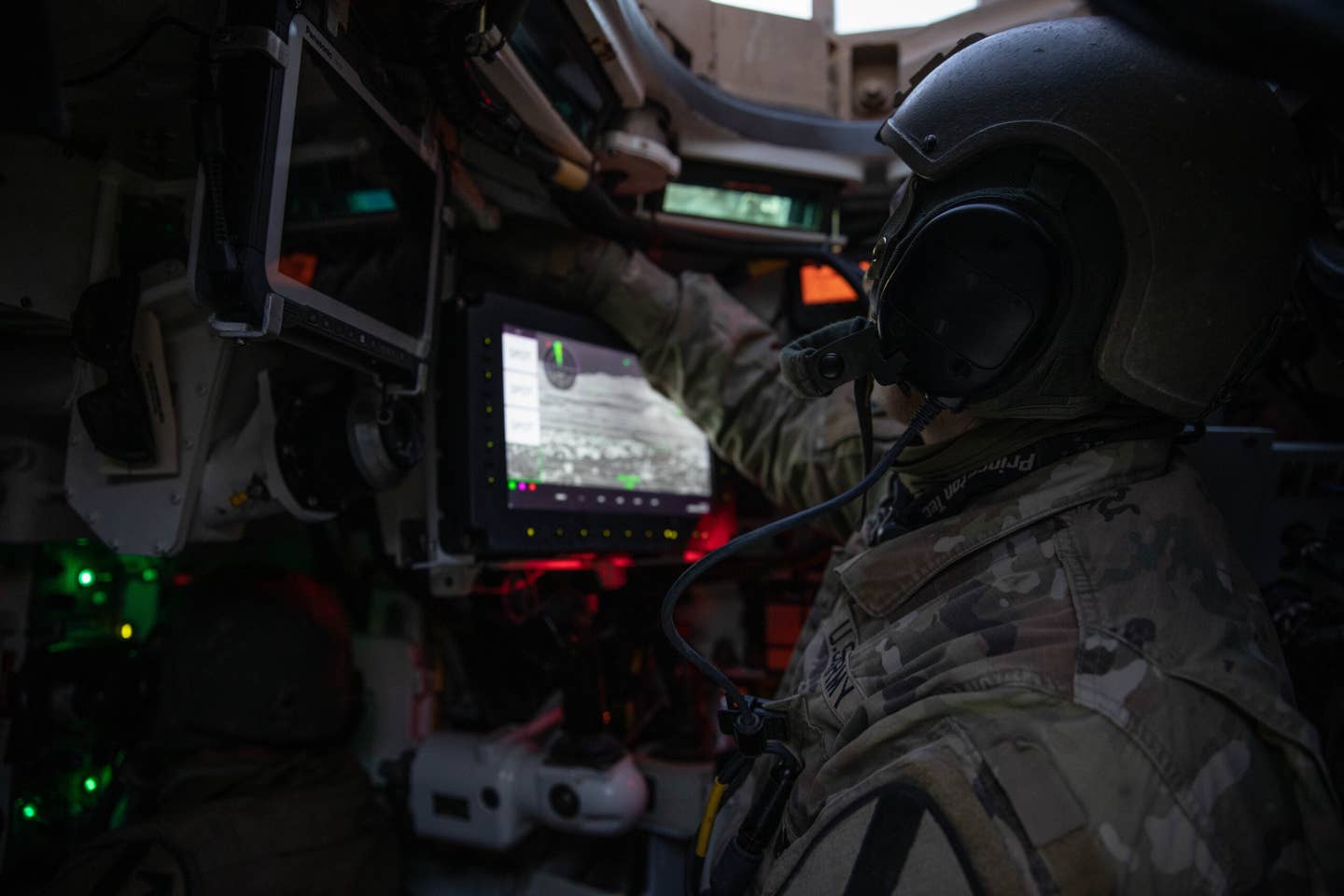 Soldiers operate an Advanced Targeting and Lethality Aided System (ATLAS) at Fort Irwin on Nov. 5, 2022. During Project Convergence 2022 many systems will be tested to determine how future command and control capabilities can be integrated with all-service multi-national partners U.S. Army photo by Spc. Gabriella Bruce-Larkin
Soldiers operate an Advanced Targeting and Lethality Aided System (ATLAS) at Fort Irwin on Nov. 5, 2022. During Project Convergence 2022 many systems will be tested to determine how future command and control capabilities can be integrated with all-service multi-national partners U.S. Army photo by Spc. Gabriella Bruce-LarkinWorking in a heavily networked environment, the Army and its allies can “operate with aircraft moving very, very close to each other at the same time,” Army Chief of Staff Gen. James McConville told The War Zone and reporters from other outlets during a November 9 conference call from Fort Irwin, where he was also joined by other senior military officials. “We're able to use fires because we have much better situational awareness of where things are and where we want to go, and where our enemy forces are. It allows us to be much more efficient at applying the systems that we want in a much more integrated way rather than deconfliction. What we're trying to do is integrate all the different types of forces from multiple domains to get the optimal effects that we need.”
A particular focus of the overarching Project Convergence initiative, which began in 2020, is testing all manner of technologies to integrate the service into a so-called Joint All-Domain Command and Control (JADC2) environment. McConville added yet another letter onto that acronym, describing the network being tested across the Pacific as Coalition JADC2, or CJADC2. Having multiple U.S. military services plugged into that network, collecting data, and distributing it throughout is complex enough. Adding in coalition partners like the British and Australian units participating in PC22 and the challenges of dealing with the data firehose multiply, said Lt. Gen. Scott McKean, the Project Convergence experiment director and deputy commander of Army Futures Command.
“One of the big problems we identified in this particular scenario is going to be we have too much data, and we haven't been able to correlate it in the way that we want to provide it to the warfighter,” McKean said. “A few years ago, we wouldn't have had that problem because we weren't even talking to each other, and our machines certainly wouldn't be talking to each other. And so that's a huge step forward, the fact that we are all sharing data. … We have the capability right now to take multiple communication pathways. Some of those are very military-specific. Some of those are actually quite commercial. And we can use those in multiple ways, so if one is denied, we switch to another one.”
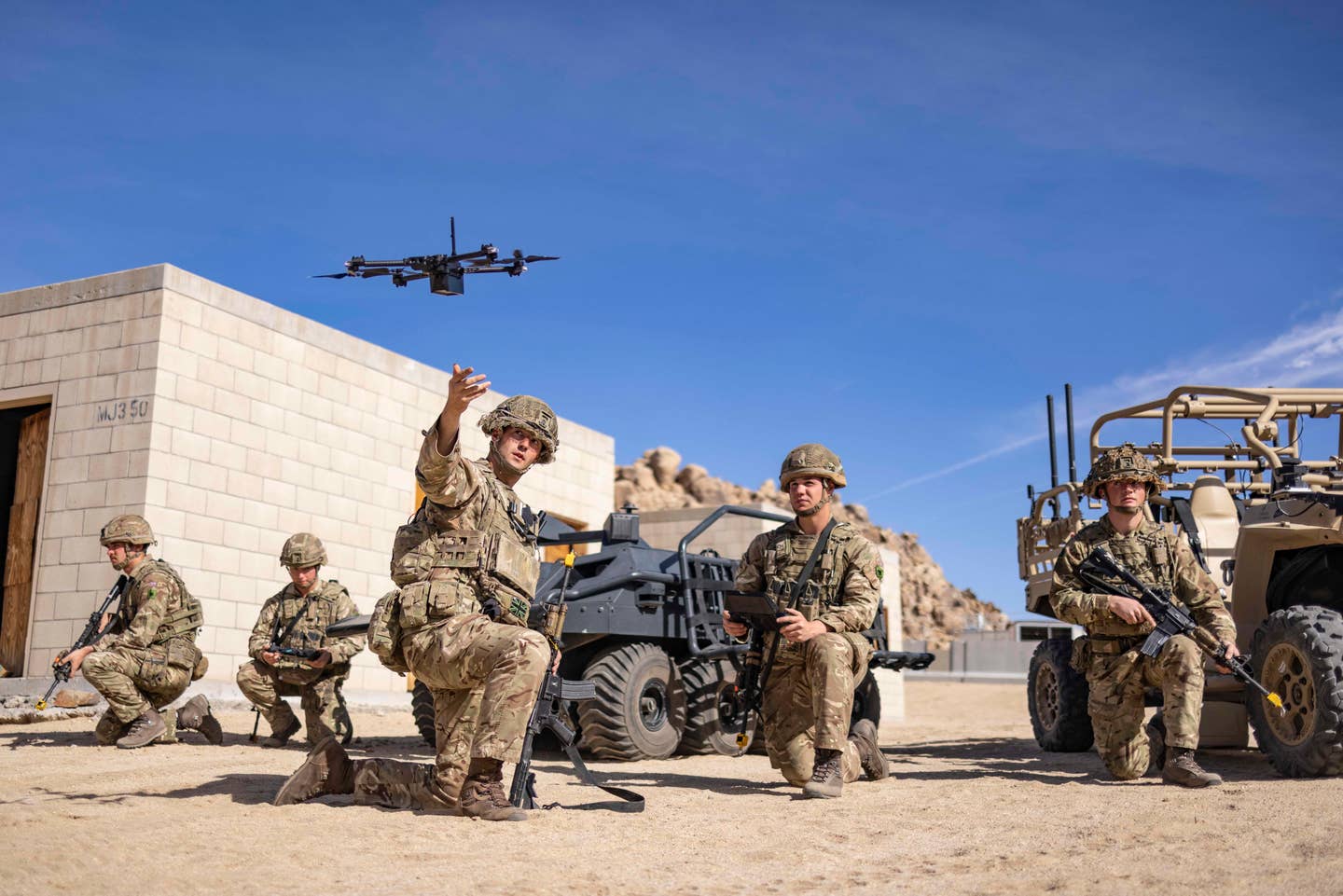 British soldiers launch a SkyDIO unmanned aerial vehicle (UAV) during Project Convergence 22 at Fort Irwin, California. Army Futures Command
British soldiers launch a SkyDIO unmanned aerial vehicle (UAV) during Project Convergence 22 at Fort Irwin, California. Army Futures CommandSecretary of the Army Christine Wormuth, who has now presided over her second Project Convergence event as the service’s top civilian leader, told reporters that data management was still a serious challenge to achieving a truly joint network into which sister services and allied militaries can plug in and operate. There is no lack of data streaming in from manned aircraft, soldiers on the ground, unmanned ground and aerial vehicles, and other sources, she said. Problems arise with combing through that glut and providing the right commanders with the data they need and nothing more, she said.
“We still need to keep working on how we standardize the data so that we're all able to access it and we're all able to share it across services and platforms,” Wormuth said. “I think we're making progress on that, but there's still work that has to be done. … We're now able to tap into a huge volume of data. A lot of the challenge is going to be figuring out how we process that as quickly as we can, and I think we did see some real improvements in terms of how quickly we were able to take information and change it into what I would call more actionable knowledge. The other thing I think we have to do is commanders are going to have to figure out what are the critical information requirements that they need."
Brig. Gen. Warren Gould, director of general systems and integration for the Australian Army, said his troops could push real-time data from its RQ-7 Shadow 200 tactical unmanned aerial system (UAS) down to the lowest unit levels using U.S. communication networks. In a feat of long-distance communication and coordination, Gould said U.S. drones flying and operated from Fort Irwin could transmit targeting data to units in Australia that then used that information to perform a fire mission.
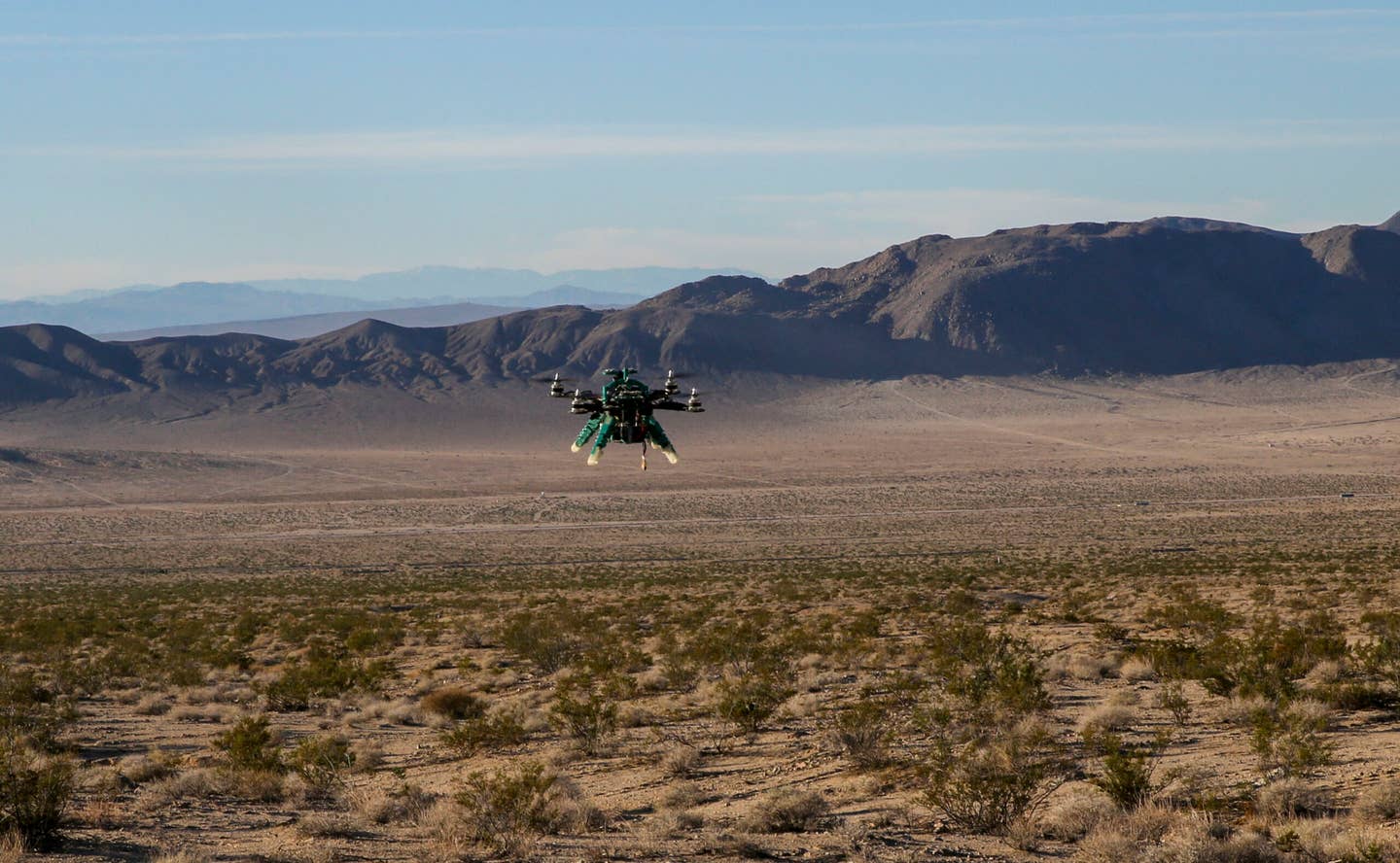 A relocatable unattended ground sensor was tested during Project Convergence at Fort Irwin, Ca on Nov 4, 2022. U.S. Army photo by Spc. Monyae Alexander
A relocatable unattended ground sensor was tested during Project Convergence at Fort Irwin, Ca on Nov 4, 2022. U.S. Army photo by Spc. Monyae AlexanderIn another first for allied interoperability, swarms of up to 50 drones could provide situational awareness data to various allied units in real-time, McKean said. In all cases, McKean noted that a 2nd lieutenant or a soldier of lesser rank could plan the mission, launch, and operate a drone swarm with little to no outside assistance.
“We were able to get different drone swarm capabilities employed by all of our partners out here,” McKean said. “In some cases, we were able to get 50 or more drones operating over an urban area, controlled by one operator. And that, to me, was a significant advance in our capabilities of employing unmanned aerial systems.”
Simulated opposing forces at Fort Irwin adapted to the threat of swarming drones. Still, coalition operators were able to react to their defenses and send different mixes or sizes of swarms to overwhelm or circumvent them, creating a cycle of innovation, he said.
“The effect that it had on the opposing force was significant,” McKean said. “It's something that we're learning because we know that we also have to be ready to respond to those types of capabilities when employed against us. … A lesson that I'm taking away from this is, you know, the enemy will adapt. And this will be a continuous cycle of adaptation as we employ technologies, regardless of what they are. That speed will provide you a temporal element of decision advantage, but it'll be fleeting for sure.”
Lt. Gen. Clinton Hinote, deputy chief of staff of strategy, integration, and requirements at U.S. Air Force Headquarters, said the recent Army experimentation had broader implications than the ability to communicate across oceans or launch large swarms of drones. Project Convergence proves that the U.S. and allied militaries are on the verge of launching a truly integrated fighting force capable of tackling the most challenging combat scenarios adversaries like China could pose in the vast Asia-Pacific region.
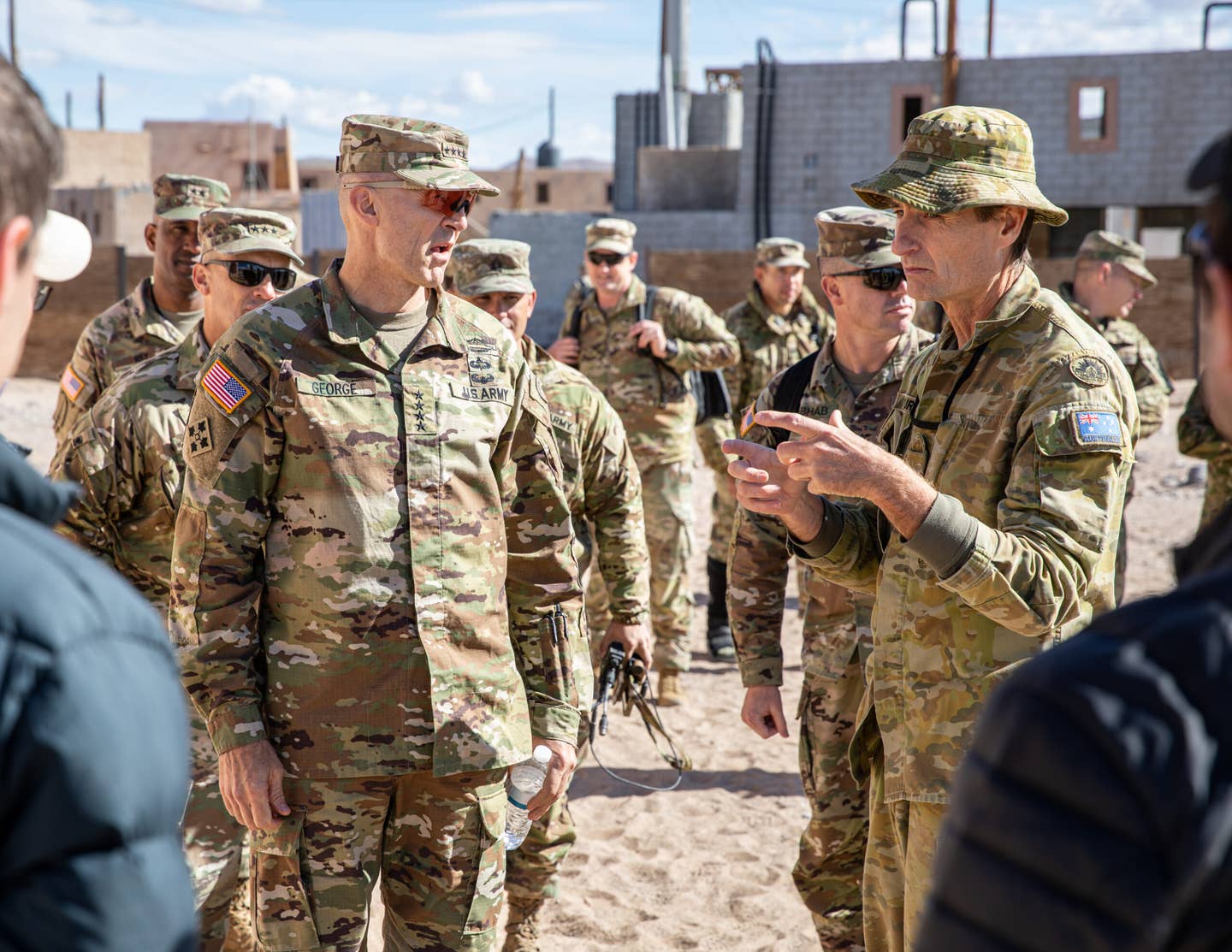 U.S. Army Gen. Randy George, Vice Chief of Staff of the Army, and Australian Lt. Col. Stuart Purves, liaison at Army Futures Command, talk about Project Convergence 2022 Nov. 3, Fort Irwin, California. U.S. Army photo by Staff Sgt. Matthew Lumagui
U.S. Army Gen. Randy George, Vice Chief of Staff of the Army, and Australian Lt. Col. Stuart Purves, liaison at Army Futures Command, talk about Project Convergence 2022 Nov. 3, Fort Irwin, California. U.S. Army photo by Staff Sgt. Matthew Lumagui“We, meaning the forces represented this table, are very close to being able to field that all-domain force,” Hinote said. “Project convergence showed me that that is possible. Increasingly, warfare will be domain agnostic. You will not care where you are sensing. You will not care where the decisions are being made. And you, frankly, won't care where the shooting is coming from. What you will care about is that you're working so closely together, it's going to be really hard to tell what's Army, Air Force, Navy, and Marine Corps, what’s British land forces, what’s Australian. The enemy won't be able to tell.
Hinote suggested a hypothetical in which the experimentation in California over the preceding 10 days was a real-world combat scenario in Europe. The force fielded by the U.S. and its allies “would be the most powerful single task force that the world has ever seen,” he said. “We're that close.”
No comments:
Post a Comment